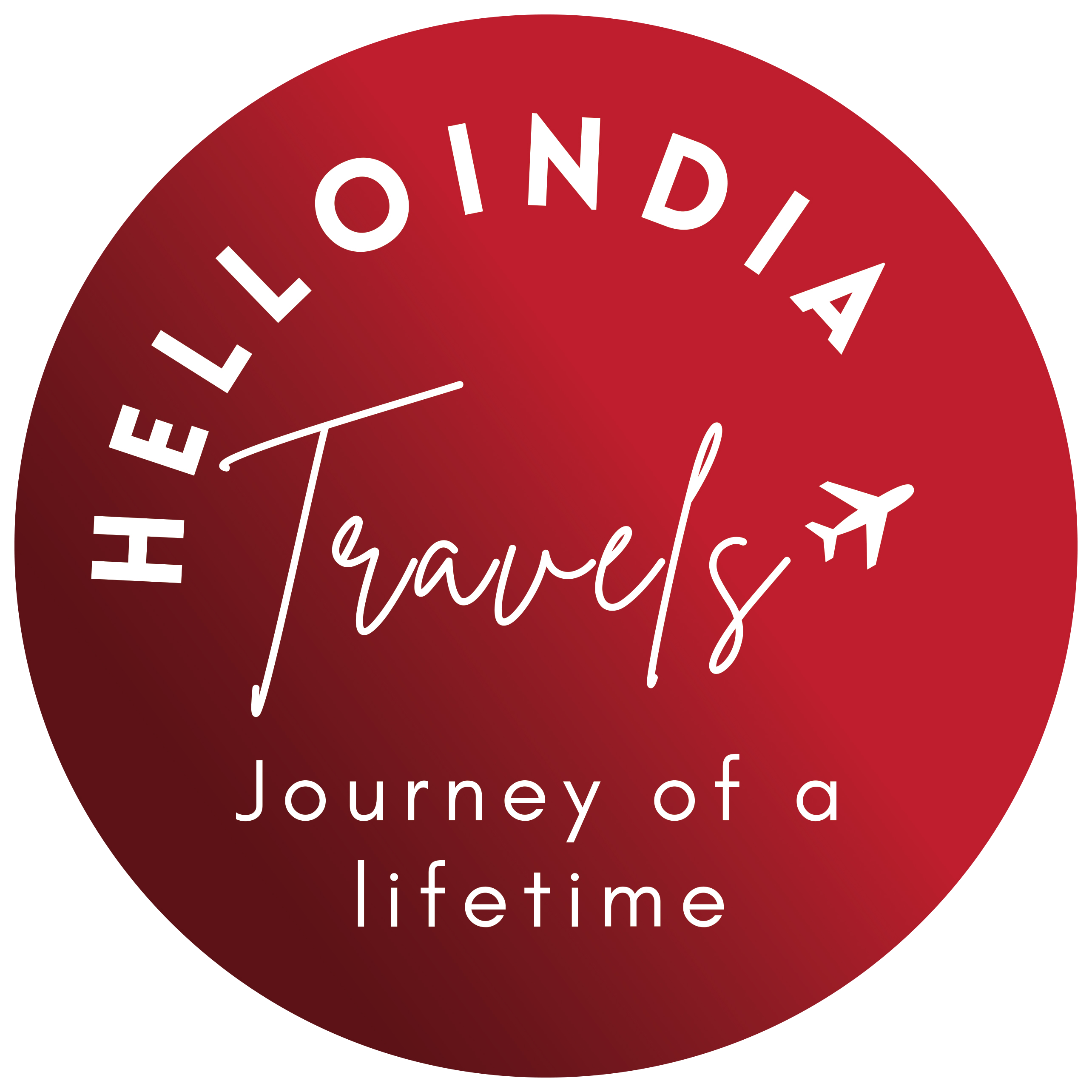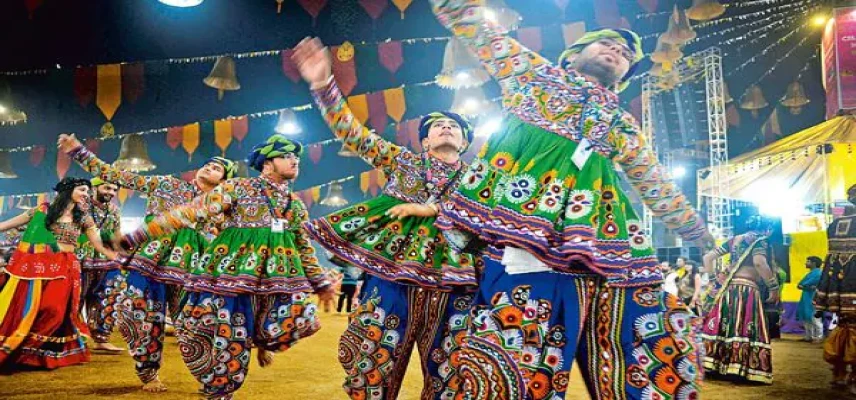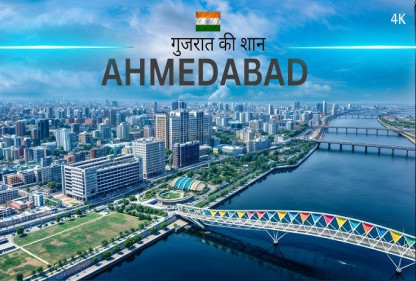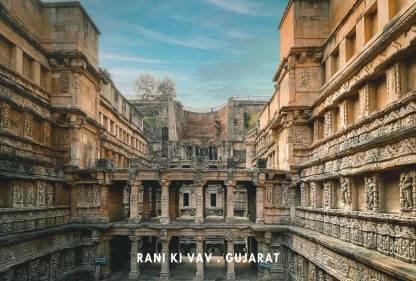Gujarat
Welcome to the vibrant state of Gujarat, where the past and present dance in harmony, and every corner whispers tales of bygone eras and vibrant traditions.
KHUSBOO GUJARAT KI
The westernmost state of the country, bordering Pakistan has a varied landscape ranging from the forests of Gir to the hills of Diu and the white sand desert at Kutch. With a splash of color and culture around every corner, Gujarat is an ideal place to witness India’s reason for being called incredible. With the largest coastline stretching over 1600 km, the state has numerous offerings spread across culture, nature, art, wildlife, history and religion. From the splendid beaches of Diu to the historical gems of Lothal and Porbandar, Asiatic lions and Blackbucks in the Saurashtra region, and beautiful temples in Vadodara, Gujarat is a surprising holiday getaway for explorers. The state's travel motto is, ‘Aavo Padharo’, which translates to its humble request to come and experience Gujarat. The birth state of the iconic Mahatma Gandhi, the state is immensely popular among domestic travellers for its natural beauty and cultural festivals. Cities like Vadodara, Ahmedabad, Diu, Dwarka, and Saputara have slowly made dents in the travel map of the country. While Ahmedabad is being established as a major metropolitan hub, quaint cities like Kutch, Dhola Vira and Bhuj are major centres of local culture. The greatest time to visit Gujarat is during the Navratri festival, which takes place in September or October each year. Here is a look at all the major attractions to see in the state so you can decide what surely not to miss when travelling to India.
Eye-Catching Places to Visit in Gujarat
Ahmedabad
Located on the banks of Sabarmati River, the growing city was once the capital of the state before it was shifted to Gandhinagar. Parts of the city have been titled a UNESCO Heritage Site due to their historic value. The town offers scrumptious food and a perfect glimpse of the lifestyle of people in the state. It is also home to many temples, museums and regional markets that are known for their textiles and bandana handloom technique. It is best to list as places to buy local handicrafts. The city has become a commercial hub with an old fashioned charm and a colonial past. Many people also visit the city to see the Sabarmati Ashram, located immediately beside the Sabarmati river, which was constructed by Mahatma Gandhi when he came back from South Africa. It is an iconic place as Gandhiji resided here for many years and the historic Dandi March also started from its doorstep. The place is now a museum exhibiting the belongings of Bapu as Gandhiji was fondly known. One can learn more about his life and teaching through a visit to this place.
Kutch
One of the most surreal places to witness in India, the Kutch region is known for its picturesque landscape, it is on every traveller’s wishlist. The architectural splendour, natural beauty and cultural abundance attract one and all to this gem in the state. Located on the Pakistan India border, there are many sections from where you can visually see the neighbouring state. The region is best experienced during the month of November to February during the winter months when the moonlight reflects on the white sand desert making up for some majestic views. The famed Rann of Kutch festival is held at the same time, displaying its magnificent splendour. It has been an iconic location for some Bollywood movies too due its pristine untouched beauty. The area has a very low population and yet is also famous for crafts, embroidery, flamingo sanctuaries and wild ass sanctuaries. The are nearby areas like Bhuj and Dholavira, worth adding to you list too. When in Kutch you can also enjoy a stay at Banni Village, that are the regional people woking in the handicrafts industry. There are few resorts in the area that offer a unique experience of the region.
Bhuj
This desert city has a vibrant history dating back to the reign of kingdoms and empires be it the Naga Chiefs, the Jadeja Rajputs, the Gujarat Sultans and then the British Raj. Bhuj offers a deep dive into the various civilizations and events in South Asian history through its archaeological finds, Indus Valley Civilization remains and places related to epic tales of Mahabharata and Alexander’s historic March into India. Some of these sites have been converted into museums so that one can carefully track the history of the region You must see sites, including the 2000-year-old Kshatrapa inscription at the Kutch Museum, the Mirror Hall of Aina Mahal, the Prague Mahal Clock Tower, and the sculpture of Ramakund Stepwell, and the beautiful Hamirsar lake. It is also used as a base for the Rann of Kutch festival as many arrive here and travel to the desert region.
Vadodara
This historic city is known to be the cultural centre of Gujarat because of its vibrant festivals. Maratha leader Sayaji Rao Gaekwad III, hosted some of the most exemplary architectural exhibits and envisioned the dream of transforming this metropolis into a learning, industrial and commercial centre. The city is home to some majestic monuments like the Laxmi Vilas Palace. From palaces to museums, the city is ideal to capture the essence of the state. Some of the places you can visit are Laxmi Nivas Palace, Sayagi Baug, Champaner Archeological Park, Ajwa Nimeta Garden, and Vadodara Museum Art and Gallery
Dhola Vira
This southern centre of Harappan Civilization situated on an arid island in Gujarat is a beautiful site to study the history of human evolution. The ancient city of Dhola Vira which was occupied between 3000 and 1500 BCE is one of the best surviving urban settlements from the time period in Southeast Asia, consists of a fortified city and a cemetery. At that time two seasonal streams provided water to this walled city which is marked by a heavily guarded fortress and ceremonial grounds as well as streets and homes of varying percentage quality, indicating a stratified socioeconomic hierarchy in the region. People are drawn to Dholavira because it offers a glimpse into the pioneering Harappan mentality, complete with the world's best water conservation system, first signboards, and ancient Indus characters. The region was discovered in 1967 by archaeologists from the Archaeological Survey of India (ASI). Terracotta ceramics, beads, gold and copper ornaments, seals, fish hooks, animal figures, tools, urns, and vessels, all of which show trade contacts with other lands, were also discovered. All of these artefacts and articles are now on display in the museum near the city's entrance. All the findings reveal interesting facts about inter-regional trade with other Harappan cities, as well as cities in Mesopotamia and the Oman Peninsula. History lovers will find this place to be an insightful way to add more knowledge to their learnings.
Gir National Park
Adventure lovers should definitely add Gir National Park to their list of explorations. The sanctuary is part of a very dry deciduous forest region and home to the iconic Gir Lions. The regional governments have played a crucial role in maintaining the area keeping conservation in mind. the protection of these lions was initiated by Nawab of Junagarh. Hills, plateaus, high ridges, and segments of seven important rivers in the region, including the Datardi, Hiran, Raval, and others, make up the park's unique terrain. It holds about 400 types of fauna and 2300 species of fauna, making it one of the top sites to visit in Gujarat. Other important hunting species found here are leopards, chausingha, spotted deer, hyenas, sambar deer, and chinkara. National Park and the National Wildlife Refuge are the only homes of Asian lions. Enjoy a lion safari at the Gir Interpretation Zone and get up and personal with crocodiles at their breeding centre. At the park's souvenir shop, you may buy local handicrafts and materials. If you travel 15 days after Holi, you can attend the Maldhari and Siddis tribes' folk dance and cuisine celebration.
Fairs and Festivals
Like every other state Gujarat’s vibrancy lies in its places and its culture which can only be truly experienced through its festivals. One of the biggest festivals celebrated all across the state is Navratri. Families and friends come together to dance their way into the night. The nine-day festival is to honour Goddess Durga, who is worshipped for nine days and then submerged in water. Loud music, exciting competitions, flea markets and exhibitions, tongue-inspiring food, and the most beautiful and vibrantly dressed crowds, this is what you'll experience in Navaratri, Gujarat. As mentioned above, the festival at Rann of Kutch, Rann Utsav as it is called, is an extravagant festival to showcase the region in all its glory.. Exciting music, authentic handmade items, bandana sarees and traditional ornaments can be experienced on the dazzling white sands. The festival is the purest reflection of Gujarat's folk culture. Sleep in a desert tent, try delicious Gujarati food and have a heavenly experience. Then there is the festival of Uttarayan or the Kite Festival where the sky is filled with colourful kites of all shapes and sizes making it a sight to behold. Being the birthplace of Lord Krishna, Janmashtami is also celebrated with full zeal and enthusiasm.
Delicacies of the state
Representing the culture, people and their vibrant hearts, the cuisine of Gujarat is a combination of flavour and fervour. The elaborate style of cooking adds richness to the taste and you can feel the essence of history come alive through every dish. Gujarati cuisine has different tastes and aromas in each region. Dominated by vegetarian dishes, food is mostly served on metal plates called a ‘Thali’. Typical Gujarati dishes include dal, kadhi, salad, poori, chapati, pickles, papad, and some trendy sweets. Dhokla, Thepala, Fafda, Kachori, Khandvi, Ganthia, Oondhiya, Debra and Surat Paan are just a few of the many Gujarati dishes that define the cuisine here. Apart from these, Basundi, Puranpoli, Shrikand, Ghewar and Malpua are nationally renowned traditional sweets that cannot be overlooked.
Shopping in Gujarat
A wide range of handmade products that show the complex art form of Gujarat are not only popular in our country, but also well known all over the world. These products include furniture, jewellery, embroidery, leatherwork, metalwork, clay products and mirror work. Gujarat serves as the manufacturer of the most creative and elegant furniture, including comforters, quilts, pillowcases and placemats. Complex and delicate patterns are very accurately woven into the patrol sari.
Best time to visit Gujarat
The best time to visit Gujarat is during the winter months from October to February. Visiting the state during the monsoon (July-September) is also a good idea, especially in areas with little or no rain, as it is a hot and humid arid area. During the summer, from March to June, the temperature is high, making it difficult for travellers to explore most of the attractions, but a little rest from the scorching heat of summer resorts and nature reserves.
How to reach
The state is well connected to all other major states and hubs. Gujarat has 17 airports with the international airport located in Ahmedabad , Rajkot and Surat and Domestic located in vadodara providing good connectivity to other metropolitan cities. Trains to Gujarat make their way to and from major place such as Delhi, Uttar Pradesh and Punjab. Some of the busiest railway stations are in Surat, Ahmedabad, Rajkot and Vadodara. You have access to local buses and comfortable Volvos to travel to and from Gujarat. If you are fond of road trips, these two-lane and four-lane highways are a blessing to drive on.






